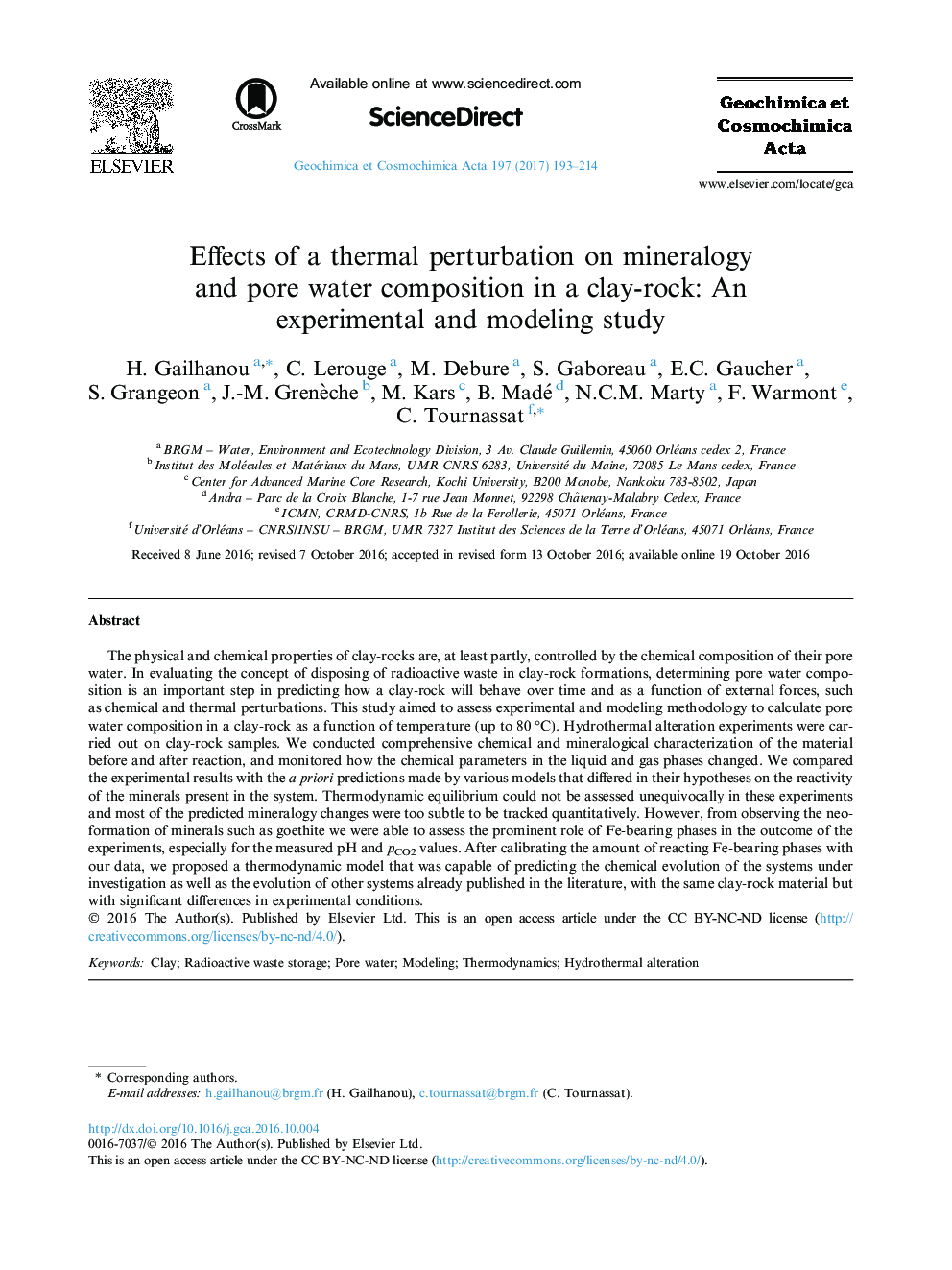| Article ID | Journal | Published Year | Pages | File Type |
|---|---|---|---|---|
| 8911043 | Geochimica et Cosmochimica Acta | 2017 | 22 Pages |
Abstract
The physical and chemical properties of clay-rocks are, at least partly, controlled by the chemical composition of their pore water. In evaluating the concept of disposing of radioactive waste in clay-rock formations, determining pore water composition is an important step in predicting how a clay-rock will behave over time and as a function of external forces, such as chemical and thermal perturbations. This study aimed to assess experimental and modeling methodology to calculate pore water composition in a clay-rock as a function of temperature (up to 80 °C). Hydrothermal alteration experiments were carried out on clay-rock samples. We conducted comprehensive chemical and mineralogical characterization of the material before and after reaction, and monitored how the chemical parameters in the liquid and gas phases changed. We compared the experimental results with the a priori predictions made by various models that differed in their hypotheses on the reactivity of the minerals present in the system. Thermodynamic equilibrium could not be assessed unequivocally in these experiments and most of the predicted mineralogy changes were too subtle to be tracked quantitatively. However, from observing the neo-formation of minerals such as goethite we were able to assess the prominent role of Fe-bearing phases in the outcome of the experiments, especially for the measured pH and pCO2 values. After calibrating the amount of reacting Fe-bearing phases with our data, we proposed a thermodynamic model that was capable of predicting the chemical evolution of the systems under investigation as well as the evolution of other systems already published in the literature, with the same clay-rock material but with significant differences in experimental conditions.
Related Topics
Physical Sciences and Engineering
Earth and Planetary Sciences
Geochemistry and Petrology
Authors
H. Gailhanou, C. Lerouge, M. Debure, S. Gaboreau, E.C. Gaucher, S. Grangeon, J.-M. Grenèche, M. Kars, B. Madé, N.C.M. Marty, F. Warmont, C. Tournassat,
